Rare Rides Icons: The History of Stutz, Stop and Go Fast (Part XX)

Rare Rides Icons has been embroiled in the Stutz story since February of this year. Through six months and 20 total installments, we’ve covered the entirety of the Stutz brand’s evolution. Stutz started with a win at the inaugural Indianapolis 500 and eventually morphed into a manufacturer of high-powered luxury cars. After the emphasis turned to safety and away from racing, Stutz lost its footing quickly and went extinct.
Decades later it was resurrected by a wealthy man with a background in banking. In 1970 the new Stutz Motor Car Company capitalized on a wave of gauche neoclassical styling that the well-heeled of Hollywood and the Middle East so lovingly embraced. From there the Stutz lineup grew larger, more ostentatious, and more ridiculous. For a time the company sold its wares almost exclusively to foreign regimes, the exported vehicles long lost to time.
We finish the series with the largest and most exclusive Stutz ever built. Massive in length, it was much larger than the Duplex, IV-Porte, Victoria, and indeed the Diplomatica. We close out the Stutz chapter of our lives with Royale and a very interesting recent announcement.
All the aforementioned four-door Stutz models made their entrance into the company’s lineup in the latter portion of the Seventies, despite the wishes of CEO James O’Donnell. Once the initial and complete failure of the Duplex was in the past, the company’s successive sedans grew larger and longer. We discussed the largest sedan Stutz made last time: the enormous Diplomatica.
Even though the Diplomatica was the most expensive car in the world, it was not enough for O’Donnell, who wanted more length and a higher asking price. In his back pocket were some limousine design sketches from Paolo Martin, drawn in 1976. That was the time when Martin was tasked with updating the original Exner-designed Blackhawk, and the translation from late Sixties grandiosity into something downsized and more modern. Stutz would foist Martin’s Blackhawk design upon the B-body Pontiac Bonneville.
Stutz used Martin’s other designs too, as we saw with the IV-Porte and Diplomatica. And with the leap to Royale, the company made one final effort to turn mid-Seventies design into early Eighties reality. Martin submitted more than one Royale design, which offered slight variations on the Stutz theme.
Titled “Version A,” this Royale was the outlier. It used the basic Stutz shape but modernized it with a more aggressive rear end treatment that had a faster roofline, a stronger rear fender arch, and a higher rear deck. Doors were more aggressive in their shape, the nose was more prominent than it had been before, and the rear overhangs were shorter. Notably, the arc of the side body detailing was revised, and curved in an entirely different way.
“Version B” followed more closely to the Diplomatica, as a stretched version of the Victoria, which was a stretched version of the IV-Porte, a minor edit to the Diplomatica. There were more traditional proportions at the front end, overhangs were larger, and the side trim was exactly as it had been before. The roof line was just like the Diplomatica (and the other four-doors) and there was an opera window detail. Version B was more formal and upright, and less of a stylistic venture off the beaten path.
The following year, Martin proposed another Royale rework, a design rendering with no version label. This version looked more like the production car: The Royale was a super long Diplomatica with an extra extension in the middle and a large sunroof. The opera window was replaced by a square design in the vinyl. Rear doors showed forward vent windows and were the same reversed Fleetwood door as on the Diplomatica. Crucially, there was a squared-off hump in the trunk, and no exposed spare.
The black and white design above was put through more edits, as removal of the spare tire was out of the question. Another rendering (this time in color) displayed the Royale’s final design. The limousine project had only progressed to its present state because Stutz already had a confirmed Royale customer, the Saudi Arabian king.
Martin reported that he designed the finalized Royale on a piece of gloss paper that was 10 meters in length, and hung it up on a wall. The paper weighed enough that it sagged on the wall with the humid Italian air, which helped Martin to finalize the Royale’s curves. He handed the design over to Carrozzeria Fontana, a coachbuilder in northern Italy who was not responsible for other Stutz builds.
The resulting Royale had armor plating as standard and held a hydraulically operated throne that rotated 360 degrees (not joking). Other interior features included a fridge, minibar, car phone, intercom system, TV, a tape recorder, and Baccarat crystal barware. Like other Stutz models, the interior trim fittings were done in the highest quality materials and in 18-carat gold plating. The new Stutz was named Royale as an homage to the Bugatti Royale (1927-1933), a model that was the most expensive car one could buy in its day.
All that luxury was contained in a vehicle that was 295.2 inches long, about 24.5 feet. It weighed 6,600 pounds, as one might expect. As the Diplomatica of 1981 was $150,000 ($510,820 adj.) care to venture what the Royale asked? No, you’re quite wrong! It was $285,000 ($970,559 adj.), and was the new record holder as most expensive car in the world. Nothing else came close.
Two completed Royales were shipped to King Fahd (1921-2005) in Saudi Arabia, but he promptly sent them back to Italy. Stutz had finished the thrones in both cars in leather, upon which the King was not allowed to sit. Stutz refinished both thrones in velour and returned them to Saudi Arabia. Both Royales were black and reflected the Saudi Arabian crest in the C-pillar.
The only other Royale ever to exist was a dark red example like Martin showed in his concept rendering. It was delivered promptly to the president of Gabon, El Hadj Omar Bongo (1935-2009). The picture above shows the Royale in its final destination, complete with Gabonese flags.
After Stutz reached its ultimate limousine with the Royale, it continued offering its other wares through the late Eighties. O’Donnell sold off the company to a real estate investor in California, who is its current holder. Stutz seemed to go silent in the early Nineties, though there was at least one report of a Bearcat II being produced in 1995.
Then there was radio silence for years, until a recent development that occurred while this series was ongoing! A press release on April 20th, 2022 arrived from Stutz Motor Car of America, Inc. The company’s office location is currently on the 23rd floor of Nakatomi Plaza (Fox Plaza, Los Angeles). Stutz excitedly announced plans to finalize the engineering and design of two new models.
2024 will see the arrival of the STUTZ hybrid-electric luxury sedan and an autonomous EV sports coupe. The company stated it would immediately commence discussions with manufacturing and battery entities that would likely be outside the United States. If this vapor ever materializes, you can be sure we’ll be back with another installment in this series. Until then, it’s been fun, Stutz.
[Images: Stutz, Paolo Martin, YouTube]
Become a TTAC insider. Get the latest news, features, TTAC takes, and everything else that gets to the truth about cars first by subscribing to our newsletter.

Interested in lots of cars and their various historical contexts. Started writing articles for TTAC in late 2016, when my first posts were QOTDs. From there I started a few new series like Rare Rides, Buy/Drive/Burn, Abandoned History, and most recently Rare Rides Icons. Operating from a home base in Cincinnati, Ohio, a relative auto journalist dead zone. Many of my articles are prompted by something I'll see on social media that sparks my interest and causes me to research. Finding articles and information from the early days of the internet and beyond that covers the little details lost to time: trim packages, color and wheel choices, interior fabrics. Beyond those, I'm fascinated by automotive industry experiments, both failures and successes. Lately I've taken an interest in AI, and generating "what if" type images for car models long dead. Reincarnating a modern Toyota Paseo, Lincoln Mark IX, or Isuzu Trooper through a text prompt is fun. Fun to post them on Twitter too, and watch people overreact. To that end, the social media I use most is Twitter, @CoreyLewis86. I also contribute pieces for Forbes Wheels and Forbes Home.
More by Corey Lewis
Latest Car Reviews
Read moreLatest Product Reviews
Read moreRecent Comments
- Theflyersfan I used to love the 7-series. One of those aspirational luxury cars. And then I parked right next to one of the new ones just over the weekend. And that love went away. Honestly, if this is what the Chinese market thinks is luxury, let them have it. Because, and I'll be reserved here, this is one butt-ugly, mutha f'n, unholy trainwreck of a design. There has to be an excellent car under all of the grotesque and overdone bodywork. What were they thinking? Luxury is a feeling. It's the soft leather seats. It's the solid door thunk. It's groundbreaking engineering (that hopefully holds up.) It's a presence that oozes "I have arrived," not screaming "LOOK AT ME EVERYONE!!!" The latter is the yahoo who just won $1,000,000 off of a scratch-off and blows it on extra chrome and a dozen light bars on a new F150. It isn't six feet of screens, a dozen suspension settings that don't feel right, and no steering feel. It also isn't a design that is going to be so dated looking in five years that no one is going to want to touch it. Didn't BMW learn anything from the Bangle-butt backlash of 2002?
- Theflyersfan Honda, Toyota, Nissan, Hyundai, and Kia still don't seem to have a problem moving sedans off of the lot. I also see more than a few new 3-series, C-classes and A4s as well showing the Germans can sell the expensive ones. Sales might be down compared to 10-15 years ago, but hundreds of thousands of sales in the US alone isn't anything to sneeze at. What we've had is the thinning of the herd. The crap sedans have exited stage left. And GM has let the Malibu sit and rot on the vine for so long that this was bound to happen. And it bears repeating - auto trends go in cycles. Many times the cars purchased by the next generation aren't the ones their parents and grandparents bought. Who's to say that in 10 years, CUVs are going to be seen at that generation's minivans and no one wants to touch them? The Japanese and Koreans will welcome those buyers back to their full lineups while GM, Ford, and whatever remains of what was Chrysler/Dodge will be back in front of Congress pleading poverty.
- Corey Lewis It's not competitive against others in the class, as my review discussed. https://www.thetruthaboutcars.com/cars/chevrolet/rental-review-the-2023-chevrolet-malibu-last-domestic-midsize-standing-44502760
- Turbo Is Black Magic My wife had one of these back in 06, did a ton of work to it… supercharger, full exhaust, full suspension.. it was a blast to drive even though it was still hilariously slow. Great for drive in nights, open the hatch fold the seats flat and just relax.Also this thing is a great example of how far we have come in crash safety even since just 2005… go look at these old crash tests now and I cringe at what a modern electric tank would do to this thing.
- MaintenanceCosts Whenever the topic of the xB comes up…Me: "The style is fun. The combination of the box shape and the aggressive detailing is very JDM."Wife: "Those are ghetto."Me: "They're smaller than a Corolla outside and have the space of a RAV4 inside."Wife: "Those are ghetto."Me: "They're kind of fun to drive with a stick."Wife: "Those are ghetto."It's one of a few cars (including its fellow box, the Ford Flex) on which we will just never see eye to eye.










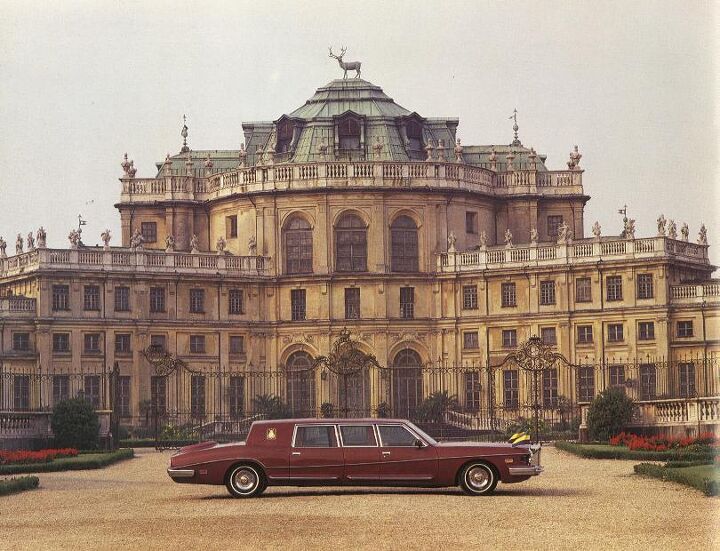


















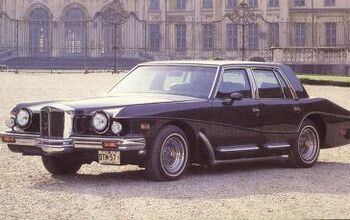
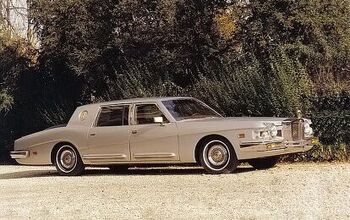
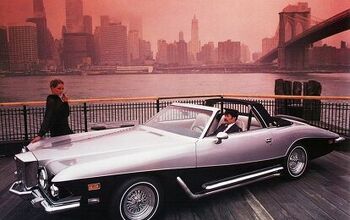
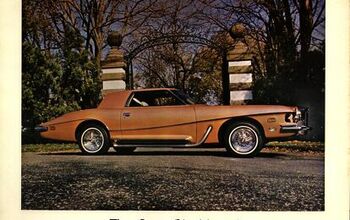










Comments
Join the conversation
This story set me down a rabbit hole of reading about Omar Bongo, his son (who remains President of Gabon today), and their very weird ways of spending their embezzled oil money.
It’s over?
Really?